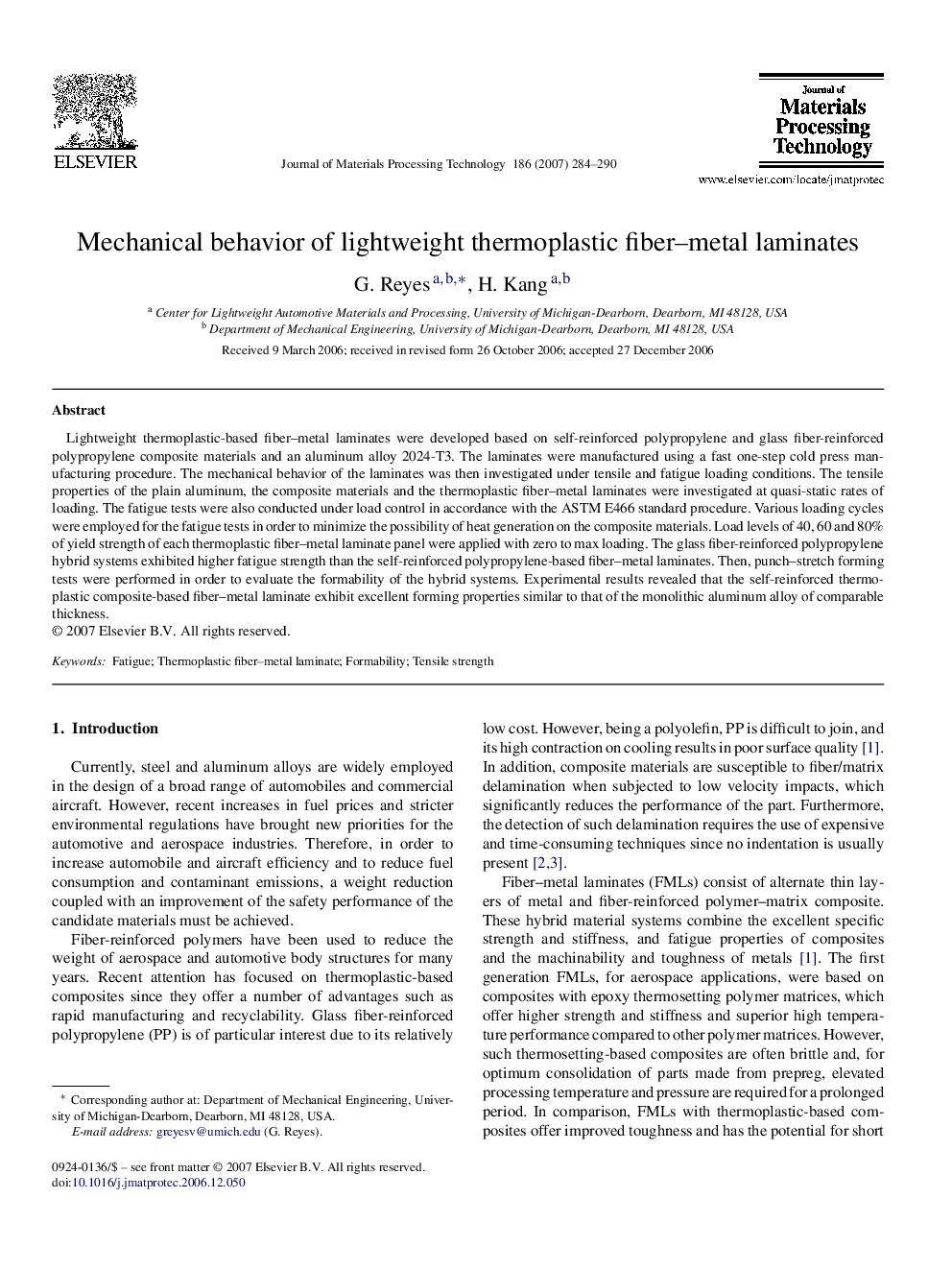| Article ID | Journal | Published Year | Pages | File Type |
|---|---|---|---|---|
| 791860 | Journal of Materials Processing Technology | 2007 | 7 Pages |
Lightweight thermoplastic-based fiber–metal laminates were developed based on self-reinforced polypropylene and glass fiber-reinforced polypropylene composite materials and an aluminum alloy 2024-T3. The laminates were manufactured using a fast one-step cold press manufacturing procedure. The mechanical behavior of the laminates was then investigated under tensile and fatigue loading conditions. The tensile properties of the plain aluminum, the composite materials and the thermoplastic fiber–metal laminates were investigated at quasi-static rates of loading. The fatigue tests were also conducted under load control in accordance with the ASTM E466 standard procedure. Various loading cycles were employed for the fatigue tests in order to minimize the possibility of heat generation on the composite materials. Load levels of 40, 60 and 80% of yield strength of each thermoplastic fiber–metal laminate panel were applied with zero to max loading. The glass fiber-reinforced polypropylene hybrid systems exhibited higher fatigue strength than the self-reinforced polypropylene-based fiber–metal laminates. Then, punch–stretch forming tests were performed in order to evaluate the formability of the hybrid systems. Experimental results revealed that the self-reinforced thermoplastic composite-based fiber–metal laminate exhibit excellent forming properties similar to that of the monolithic aluminum alloy of comparable thickness.
